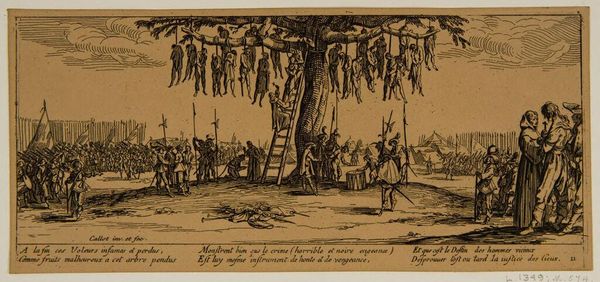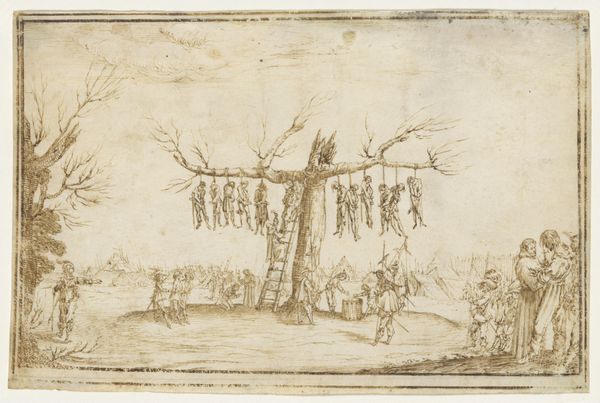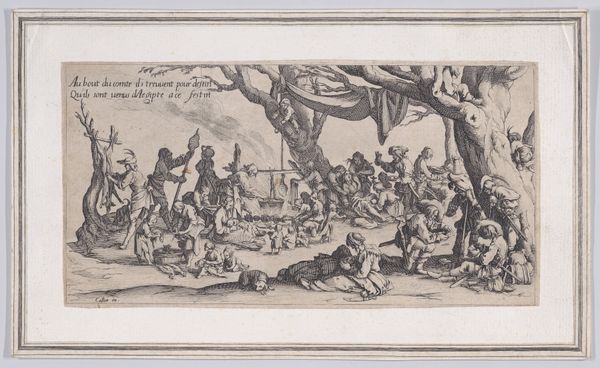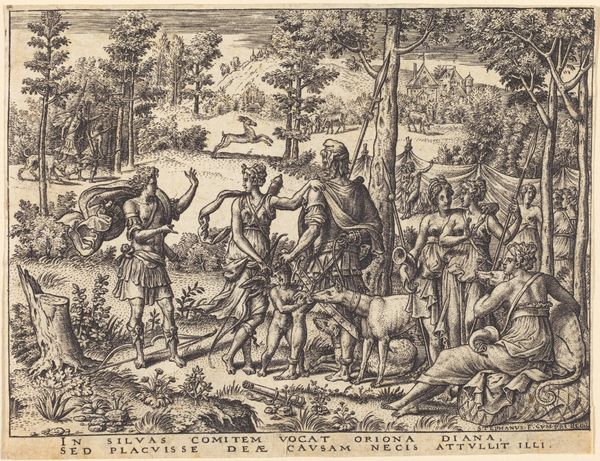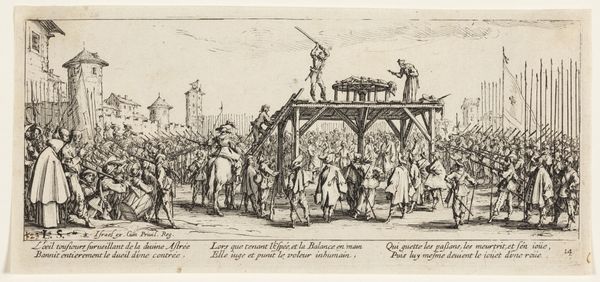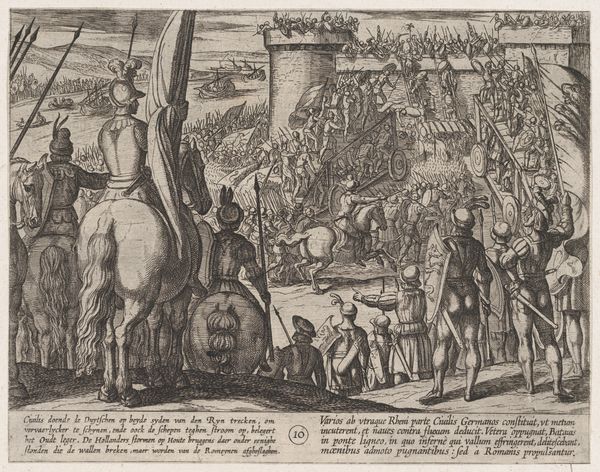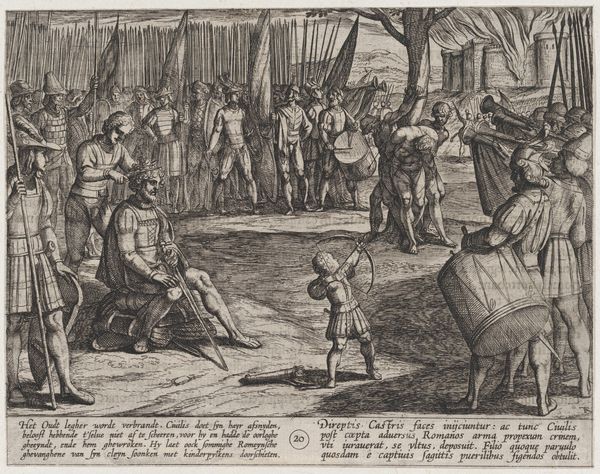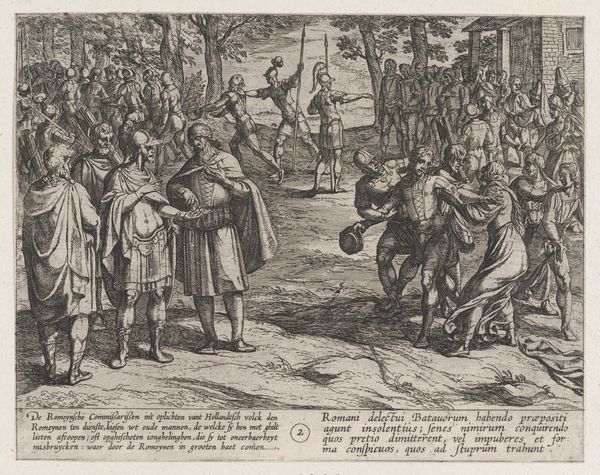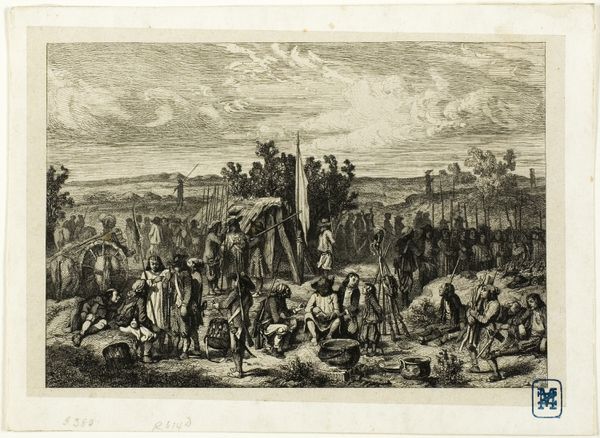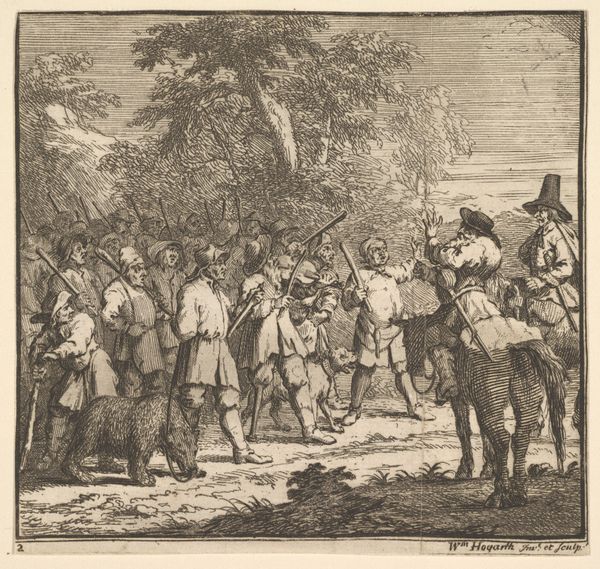
print, engraving
#
narrative-art
#
baroque
# print
#
history-painting
#
engraving
Dimensions: 83 mm (height) x 188 mm (width) (plademaal)
Editor: Here we have Jacques Callot’s "Afstraffelse ved hœngning," an engraving from 1633. It's… quite stark. The composition draws your eye immediately to the large tree laden with hanging bodies. It feels incredibly bleak and unsettling. What strikes you about this print? Curator: The power of this image, irrespective of its historical subject, emerges from Callot's mastery of line and form. Notice the extreme detail rendered through meticulous engraving; each figure, each leaf, contributes to a rigorously constructed whole. How would you describe the spatial relationships he establishes? Editor: It feels deliberately crowded and unsettling, particularly how the execution is in the foreground and yet seemingly dwarfed by the rows of soldiers in the background. Curator: Precisely. The linear perspective pushes the viewer back, creating a disturbing detachment even as we are confronted with the graphic depictions of death. Callot seems less interested in the visceral impact of violence than with the formal orchestration of bodies in space. Consider the role of the tree, then; it operates less as a symbolic motif than as a structural anchor around which the entire composition revolves. It divides the crowds as well as displays death, right? Editor: It does. The way he balances the chaotic imagery with a rigid, almost mathematical structure is really interesting. It creates this unsettling tension, like order imposed on a horrifying scene. Curator: Yes, and this tension is critical. It forces us to engage with the work on a purely visual level, disentangled from any moral judgment of the event itself. What appears at first glance to be narrative then emerges as a sophisticated study in line, form and the orchestration of masses within a highly defined space. Editor: So, in a sense, the emotional impact, although profound, is secondary to the technical and formal choices? Curator: Indeed. Callot presents a formal problem solved with ruthless precision. This reveals the aesthetic qualities and separates the signifiers. It makes you reconsider your first reaction, I think. Editor: That's given me a completely new lens through which to consider the image. I went straight to the thematic elements, and had failed to notice the way the image is working, architecturally, I mean. Curator: Exactly! Focusing on those basic formal aspects of line, texture, structure can enrich any engagement. It helps one approach artwork with clear and novel focus.
Comments
No comments
Be the first to comment and join the conversation on the ultimate creative platform.

